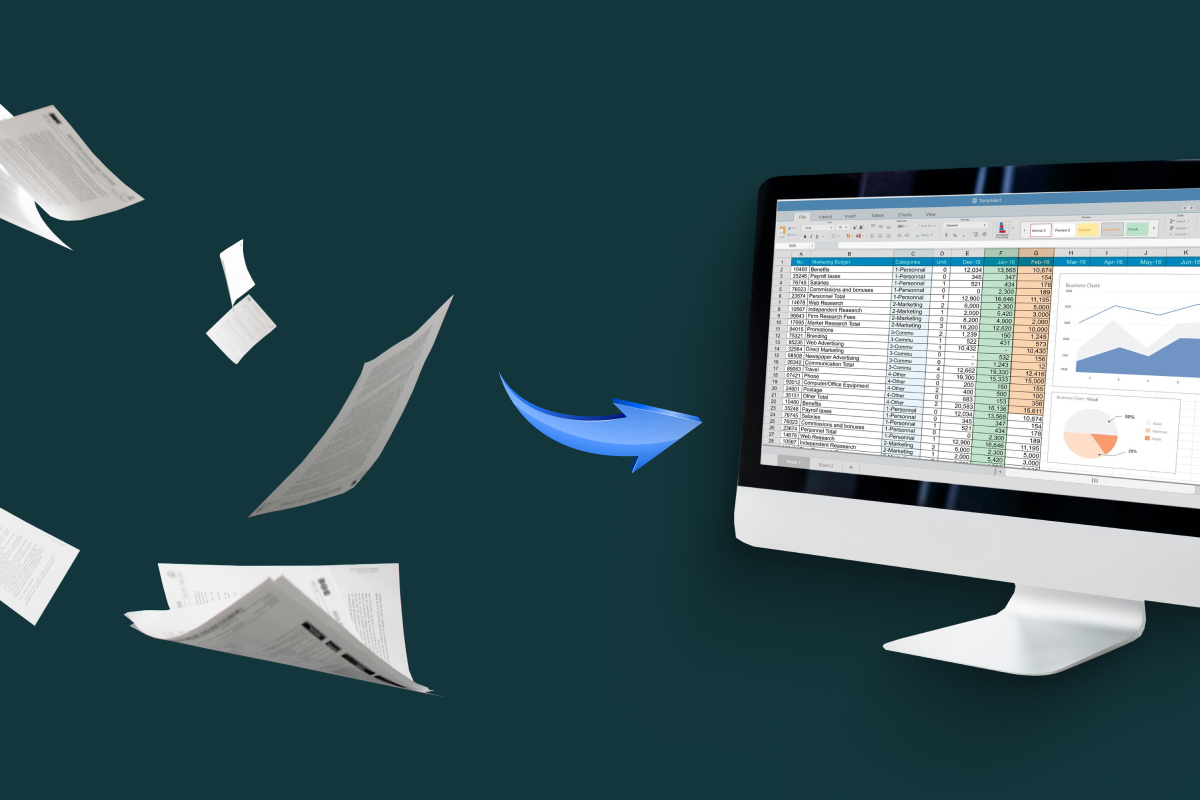Many organizations have already transitioned from paper-based processes to digital workflows. However, there still remain vast archives of valuable hard-copy records — some dating back decades — that have yet to be converted into digital form.
These legacy documents can be found across various industries:
- Healthcare: patient medical records
- Architecture: building schemes and construction plans
- Publishing: historical newspapers and archives
- Legal: old case files and contracts
The good news? Modern document digitization solutions, powered by machine learning, can help unlock the full potential of these documents — not just by making them digital, but by enabling advanced automation, contextual data extraction, and intelligent document grouping.
Before we dive into the ML-powered innovations, let’s walk through the core digitization process.
The Standard Document Digitization Routine: OCR in Action
1. Scanning
The first step in any digitization process is scanning. Once paper documents are scanned, they exist in a digital but non-editable and non-searchable image format — typically as TIFFs, PDFs, or JPEGs.
2. Optical Character Recognition (OCR)
Optical Character Recognition (OCR) converts scanned images into machine-readable text. The software interprets the visual image — essentially a grid of black and white pixels — and identifies characters to recreate the textual content.
While this may seem straightforward, converting images into editable and searchable text opens up massive opportunities in document management, data retrieval, compliance, and analytics.
3. Document Management
After conversion, digital files should be securely stored and organized. A Document Management System (DMS) can handle access rights, versioning, metadata tagging, indexing, and searching, enabling structured and efficient use of digitized content.
Enhancing OCR with Machine Learning
Although OCR has been around for years, traditional systems struggle with several key limitations:
- Handwritten text, stamps, or overlapping marks can obscure content.
- Complex layouts with tables, lines, and graphical elements often confuse basic OCR engines.
- Poor paper quality or degradation significantly lowers OCR accuracy — sometimes down to just 60-80%, according to LegalScans.
This is where Machine Learning (ML) enters the scene, significantly enhancing the document digitization process.
How Machine Learning Enhances Document Digitization
1. Higher Character Recognition Accuracy
ML-based OCR can intelligently distinguish between layout elements — text, images, diagrams — and focus recognition efforts in relevant areas.
For example, when digitizing engineering blueprints or architectural plans, an ordinary OCR engine might miss or misinterpret embedded labels. An ML-powered system can:
- First detect structural objects (e.g., shapes, lines, diagrams).
- Then isolate and extract relevant text within those objects.
- Avoid reading irrelevant parts (like frames or lines) as text.
This layered approach ensures critical information isn’t lost or misread.
2. Document Structure Recognition
Why It Matters
Understanding a document’s logical structure — such as titles, headings, paragraphs, and related sections — enables:
- Intelligent information extraction
- Automated categorization and indexing
- Interlinking related documents
This is especially useful for legal, medical, and technical documentation where sections follow predictable yet varying layouts.
How It's Done
Two main approaches are used to identify document structure:
- Layout Analysis: Standard forms (e.g., invoices, applications) follow consistent templates. ML models can be trained to recognize these templates and infer structure from spatial positioning.
- Automated categorization and indexing
- Content Analysis: Natural language techniques are applied to understand the semantics and detect sections based on context and keywords — e.g., identifying a section titled Diagnosis or Payment Details even if the layout changes.
Why Static Algorithms Don’t Work
Rule-based or algorithmic recognition often fails when:
- Layouts differ significantly across document types.
- Templates evolve over time.
Machine Learning, by contrast, adapts and learns from new examples, improving accuracy over time without the need to hardcode every rule.
3. Recognition of Non-Text Elements
Traditional OCR is built for letters and digits — not for detecting symbols, lines, or graphical elements.
In many industries, however, non-text features are critical:
- Engineering: diagrams, pipelines, annotations
- Architecture: symbols for electrical systems, water flow, etc.
- Medicine: charts or radiographic labels
ML models trained for object detection can recognize and even classify these non-text components, enabling full document understanding beyond what OCR alone can do.
What Can You Digitize With ML-Enhanced OCR?
The combination of OCR and machine learning makes it possible to digitize and intelligently process:
- Forms – government, legal, HR
- IDs and Passports – driver’s licenses, personal documents
- Legal Records – contracts, certificates, bonds
- Financial Statements – bank statements, checks, invoices
- Technical Drawings – blueprints, P&IDs, CAD exports
- Historical Archives – old manuscripts, newspapers
Conclusion
The digitization of documents is not just a trend — it's a necessity. Paper records, regardless of how old or complex, are steadily moving into the digital era.
Thanks to machine learning, document digitization has evolved from simple scanning to intelligent content recognition and automated document management. This leap empowers organizations to improve efficiency, enhance compliance, and unlock hidden insights from their archives.
Ready to embrace digital transformation? Reach out to Azati — we’ll implement smart, ML-powered solutions that go beyond text and give your documents a new digital life.
















































